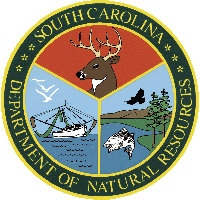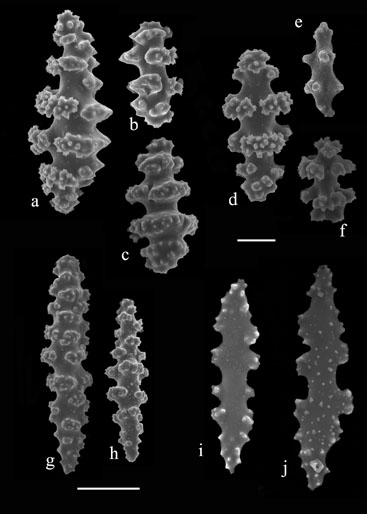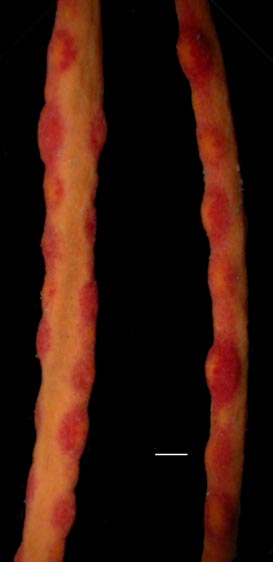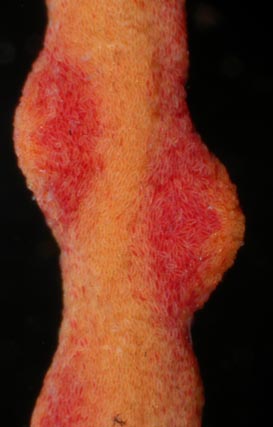CONTENTS
Introduction
The South Atlantic Bight
Methods
Octocoral Morphology
Glossary
Gorgonacean
Bauplan
see this for keys
Notes on the Species
Carijoa
riisei
Scleranthelia
rugosa
Telesto fruticulosa
Telesto nelleae
Telesto sanguinea
Bellonella rubistella
Pseudodrifa nigra
Nidalia occidentalis
Iciligorgia schrammi
Diodogorgia
nodulifera
Titanideum
frauenfeldii
Muricea pendula
Thesea nivea
Bebryce cinerea
Bebryce parastellata
Scleracis guadalupensis
Paramuricea sp.
Leptogorgia hebes
Leptogorgia punicea
Leptogorgia
cardinalis
Leptogorgia virgulata
Leptogorgia setacea
Leptogorgia euryale
Viminella
barbadensis
Renilla reniformis
Sclerobelemnon
theseus
Stylatula elegans
Virgularia presbytes
| Guide
to the Shallow Water (0-200 m) Octocorals of the South Atlantic
Bight.
S. T. DeVictor
& S. L. Morton, 2007
Leptogorgia euryale
(Bayer, 1952) Remarks. This work represents
the first record of this species in the SAB. This species is unbranched
and very slender (1-2 mm) in comparison to other Leptogorgia
species in the SAB. The prominent, conical calyces are biserial
along the sides of the branch, sometimes alternating, with the apertures
separated by approximately 3 mm. The colonies examined for this
work are pale orange or pale pink with dark pink calyces with yellow
apertures. A band of dark pink tissue, giving the appearance of
a pink lateral stripe, connects the calyces. The inner coenenchyme
immediately adjacent to the axis is dark pink. The coenenchyme contains
elongate (up to 0.15 mm) warty spindles, asymmetrical disk spindles,
and flat, serrate anthocodial rods that approach the length of the
longest spindles. It appears as though this species may exist unattached
as some specimens have growing tips on both ends. One fragment examined
had a very small branchlet on which the calyces were separated by
5 mm or more. Atlantic distribution: South Carolina, Gulf of Mexico (Florida), 15-91 m (Bayer, 1952; 1961; NMNH collections; SERTC collection).
|
|
 |


